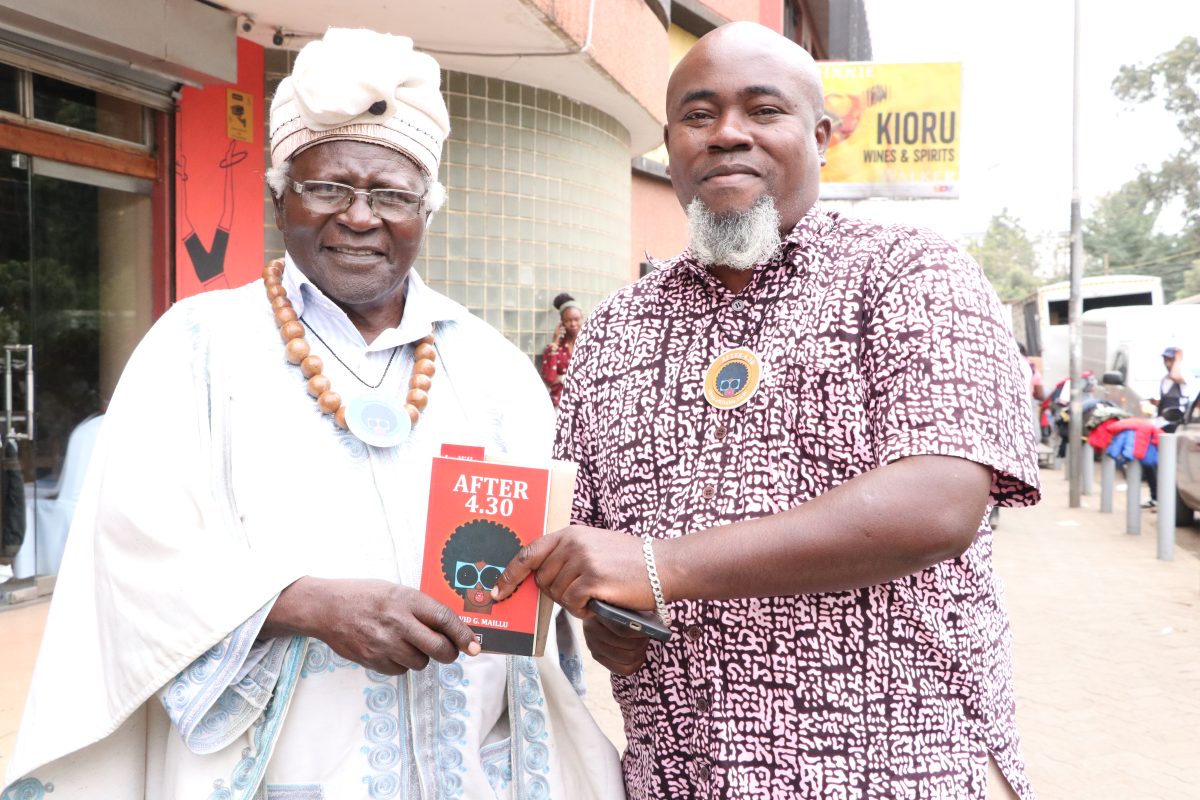For purposes of this story, I will start by going down memory lane, where we meet Ancent Soi, who was employed as a shop assistant at a curio store belonging to former Kamukunji MP, George Nthenge, at the City Market.
Now curio shops are filled with, among other things, colourful artefacts meant for the tourist market.
Soi, who had a keen but supressed artistic mind, was fascinated by colours and during his spare time, would doodle his own sketches. His employer was impressed by those sketches and would encourage him to do more.
This was in 1972, when the world was gearing for the Munich Olympic Games in Germany. That same Michael Soi, his son was born.
More on him later.
Through Nthenge, the elder Soi came across a circular seeking artistic submissions, to be considered for use as the official poster for the Munich Games.
Soi thought to himself, “I can do this…” and went to work. Nthenge, being a busy man, soon forgot about that competition, only to be jolted by an agent who came to collect the artwork.
Nthenge was about to start scratching his head, knowing he did not follow up on the matter (well, I am imagining this is what happened at the shop), when Soi fished out the piece of artwork he did and gave it to the agent.
Soi’s piece won the competition and it became the official poster for the Munich Olympic Games. That win came with fully-paid trip to the games and prize money that enabled him to move his family from Eastleigh to a swanky new estate called Buruburu.
It also marked the beginning of a successful career in visual art for Soi. For a man with no formal training in art, that was quite a feat.
At around the same time, in Jericho, the writer’s bug was tormenting David Maillu, who like Soi, was self-taught. Maillu’s formal education stopped at Standard Eight.
Maillu knew that to be a successful writer, one had to write something that people would identify with; in the course of his research, he delved into the question of what people liked talking about.
Maillu’s research yielded six broad topics that people can never get enough of. I will list them here in no particular order.
1. Battle of the sexes.
2. God, religion and spirituality.
3. Money.
4. Alcohol.
5. Work place relations.
6. Politics.
Though he is a teetotaller, Maillu frequented pubs, where he keenly observed what happened in those joints.
With his research done, he went to work and let his imagination and creativity do the rest. The result was After 4.30, a book, rendered in poetic flow, that took a critical look at what urban folks do after the official working hours.
This book, did wonderfully well in the market; it was literally flying off the shelves. His print run of 10,000 copies was cleared off the shelves within a year.
To put these numbers into perspective, today, a book (fiction) that sells 5,000 in five years, in Kenya, is considered a bestseller.
Perhaps driven by fear and jealousy, the gatekeepers (not good people) at the time, closed ranks and started fear-mongering: oh, ati Maillu’s books are unfit for human consumption (he has a book by that title BTW) that they are full of sex and will lead to moral degradation.
In spite of this moral posturing, brothels and other dens of iniquity were operating at full capacity; frequented by the same moralists. That explained why Maillu’s books were consumed in secrecy.
51 years on, Michael Soi, who grew up watching his father paint, is a big artist on his own. When Mvua Press acquired the rights to publish the third edition of After 4.30, fate connected them with the younger Soi, who was more than willing to do the book’s cover.
And that is how I found myself at the GoDown Arts Centre, in Kilimani, on Monday, where Soi has a studio.
Now, Soi is quite selective in who he gives media interviews and is very strict with time (“time is a very important asset, guard it jealously,” he told me after I arrived 15 minutes late.)
He said that he agreed to do the cover since he identifies with Maillu’s works and philosophy. “Maillu focuses a lot on human behaviour, their interactions and psychology, which is also a prominent feature of my work,” explains Soi.
Like Maillu, Soi’s work centers on places where ‘forbidden’ things happen; he regularly frequents strip joints, just to observe human interactions there. These interactions are regular staple on his canvases.
To illustrate this, he walks to a corner in his studio, where he retrieves a big rectangular painting that depicts a strip joint scene.
In the painting, a number of men are drooling over a thong-clad woman on stilletos. The men include, a suited office executive, a pastor, a policeman, a turbaned muhindi; all respectable men in society.
“I get constant accusations of painting boobies and butts, but no one talks about, that accountant, that CEO, that pastor or that cop in the picture,” he adds.
Soi paints the reality of what happens in these joints but society, or rather those who patronise them, would wish they were kept a secret. It also explains why he gets accusations of sexually commodifying women.
If you check closely, these accusations – reverse psychology – most likely come from the men who frequent these joints, through proxies – to dissuade Soi from ‘exposing’ their activities.
That is the same fate that befell Maillu, those many years ago, for daring write about what influential people do behind closed doors, like the boss, a married man, in After 4.30, who pesters Lili, his secretary, to have a secret sexual affair with him.
The fact that Soi did the cover of After 4.30, celebrates the rare intersection (at least here in Kenya), when two artistic disciplines – literary art and visual art – come together.
“We should have more of these artistic collaborations, if our creative industry is to go places,” says Soi.
After 4.30 is the fourth book, whose cover Soi has illustrated. Locally, he has done the cover of Stanley Gazemba’s novel, Forbidden Fruit.
He has also done the cover of Ethno-erotic Economies: Sexuality, Money and Belonging in Kenya, by George Paul Meiu.
The other one is Yellow Perils: China Narratives in the Contemporary World. The book, edited by Franck Bille and Sorren Urbansky, arose from a popular ‘China Loves Africa’ series, Soi did from between, 2009 and 2017, at the peak of China’s ‘involvement’ in Africa affairs.
So ‘effective’ was these series that when the Chinese President visited Kenya, in 2014, Soi received surprise guests from the Chinese delegation, in his studio and who proceeded to give him a tongue lashing for not being ‘appreciative enough’ of the ‘good things’ China was doing for Africa.
Soi’s earliest interaction with After 4.30 was when he was in high school. “Our English teacher caught me reading the book in class and advised me to read it in the dorms; not in class,” adds Soi.
His teacher was lenient; other would confiscate the book, punish the student caught with the book and then go read it in the staffroom.
The new edition of After 4.30 will be officially launched at an action packed event at the Sarakasi Dome, in Ngara, on Saturday, June 28. It will also feature a stage adaptation of the book, featuring, among others, Nice Githinji, Dedan Juma aka Zeze among others.
The play is directed by Mwaniki Njache.
Entry to the launch event, which will also feature performances by various DJs, in a street dance party, is a copy of the book, which goes for Ksh1,200.

